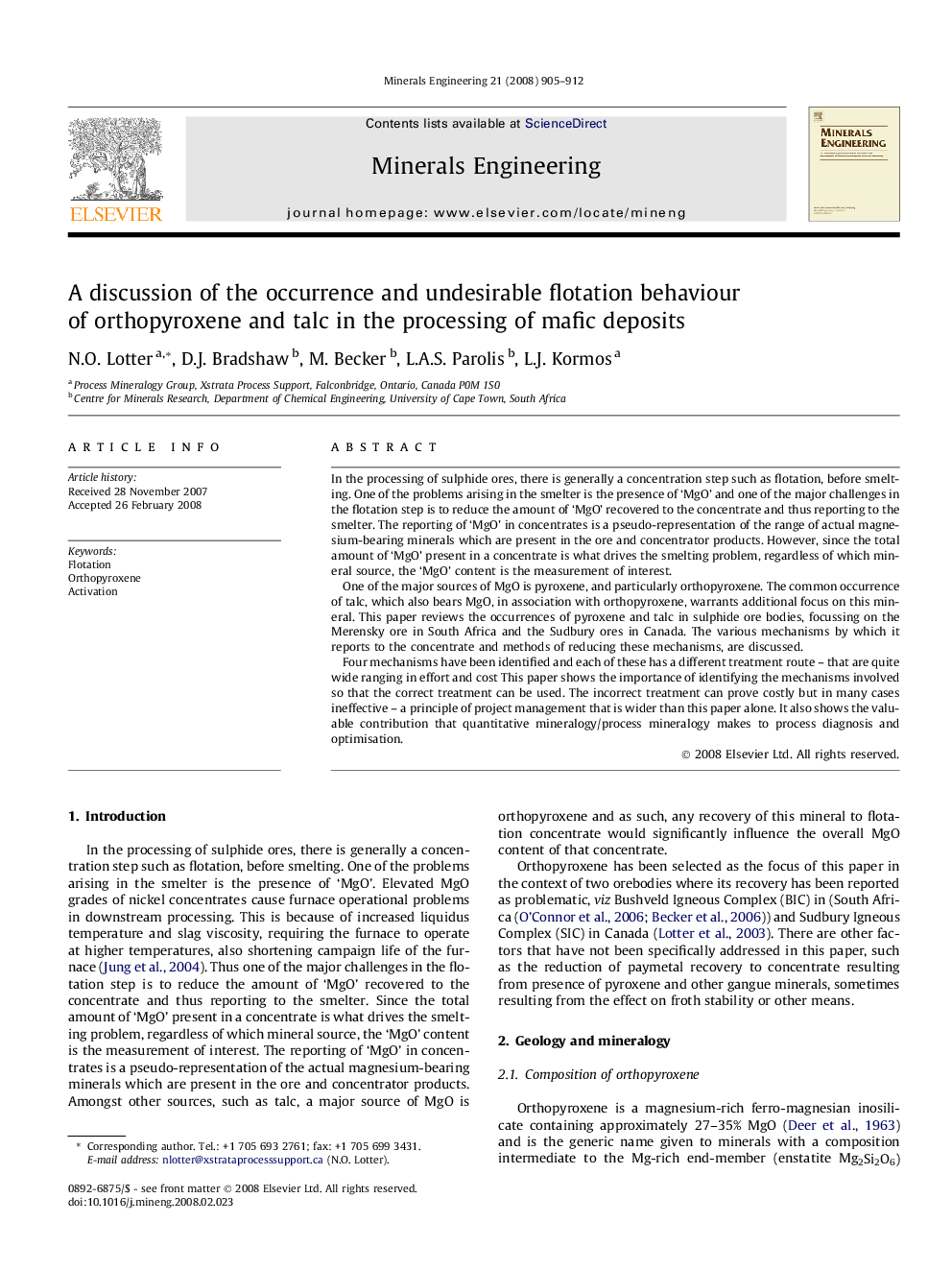| Article ID | Journal | Published Year | Pages | File Type |
|---|---|---|---|---|
| 234609 | Minerals Engineering | 2008 | 8 Pages |
In the processing of sulphide ores, there is generally a concentration step such as flotation, before smelting. One of the problems arising in the smelter is the presence of ‘MgO’ and one of the major challenges in the flotation step is to reduce the amount of ‘MgO’ recovered to the concentrate and thus reporting to the smelter. The reporting of ‘MgO’ in concentrates is a pseudo-representation of the range of actual magnesium-bearing minerals which are present in the ore and concentrator products. However, since the total amount of ‘MgO’ present in a concentrate is what drives the smelting problem, regardless of which mineral source, the ‘MgO’ content is the measurement of interest.One of the major sources of MgO is pyroxene, and particularly orthopyroxene. The common occurrence of talc, which also bears MgO, in association with orthopyroxene, warrants additional focus on this mineral. This paper reviews the occurrences of pyroxene and talc in sulphide ore bodies, focussing on the Merensky ore in South Africa and the Sudbury ores in Canada. The various mechanisms by which it reports to the concentrate and methods of reducing these mechanisms, are discussed.Four mechanisms have been identified and each of these has a different treatment route – that are quite wide ranging in effort and cost This paper shows the importance of identifying the mechanisms involved so that the correct treatment can be used. The incorrect treatment can prove costly but in many cases ineffective – a principle of project management that is wider than this paper alone. It also shows the valuable contribution that quantitative mineralogy/process mineralogy makes to process diagnosis and optimisation.
